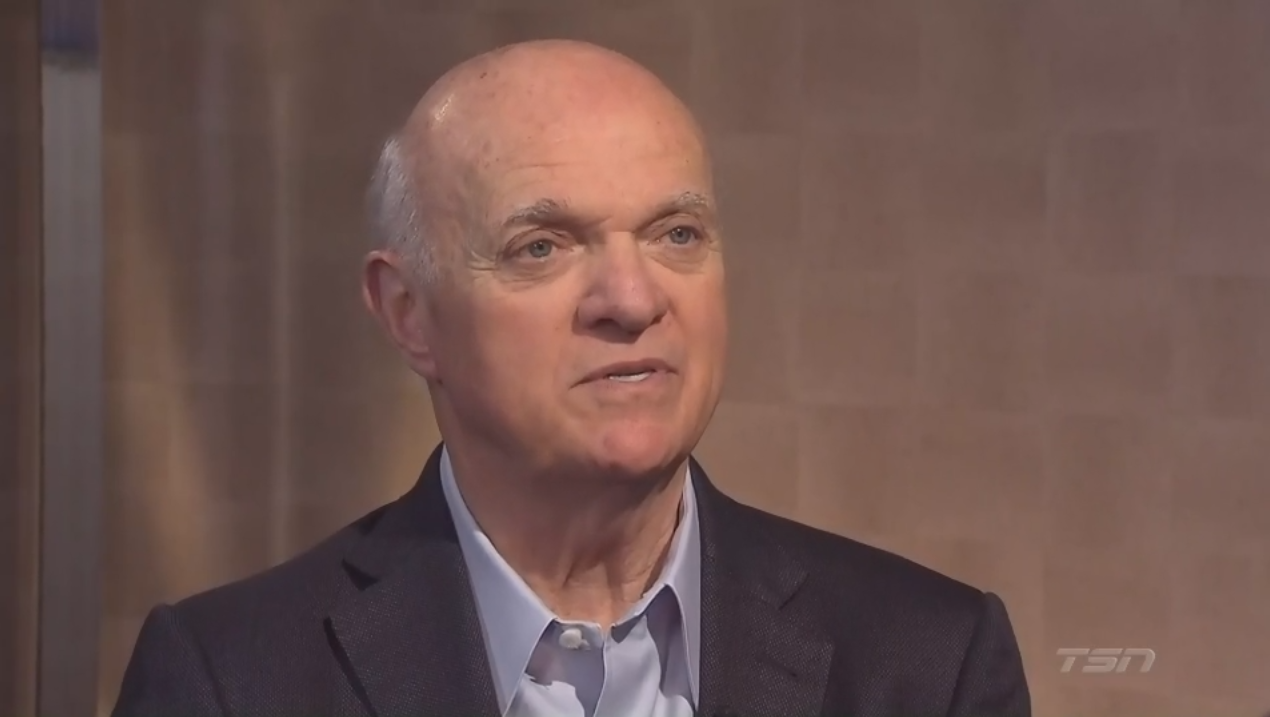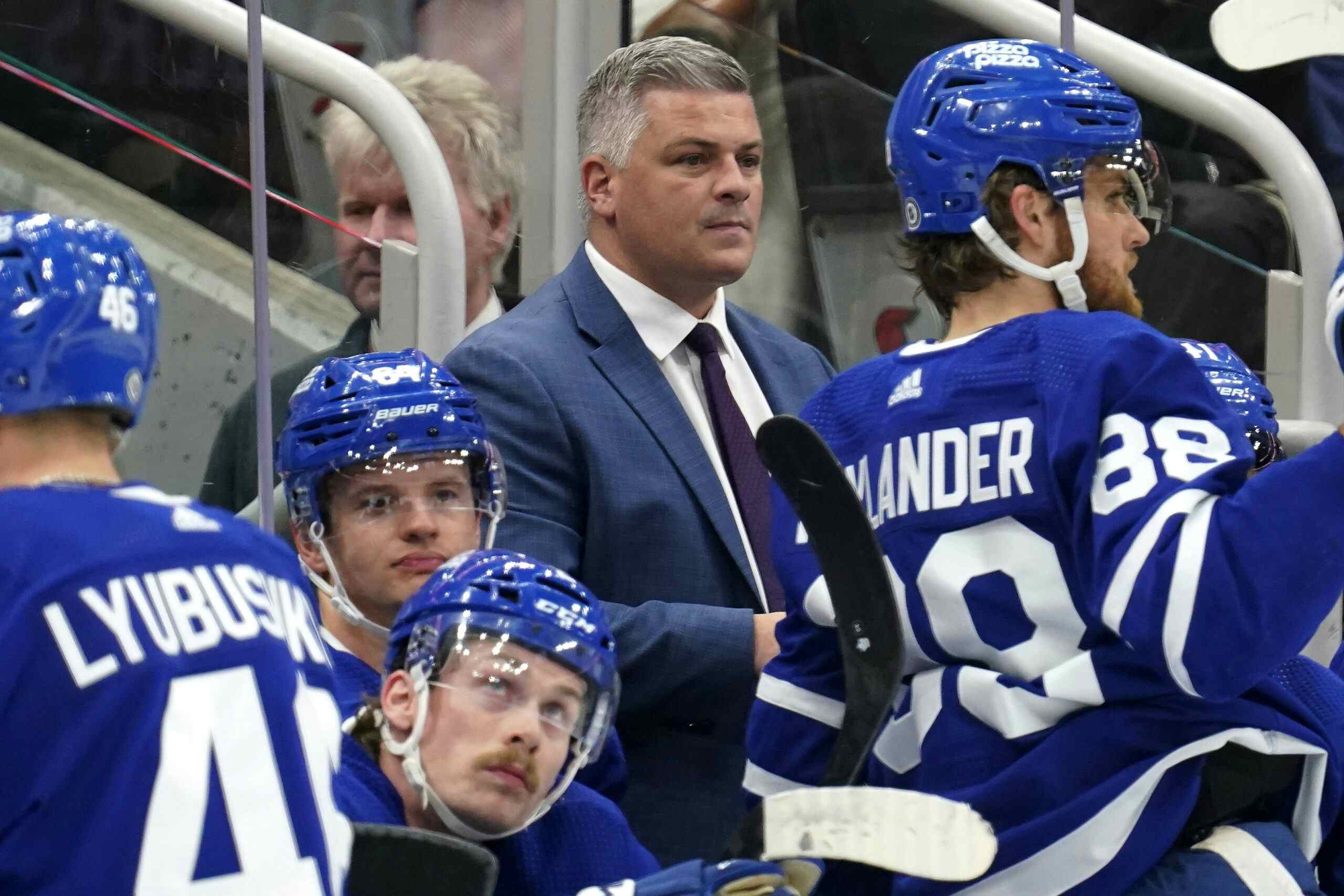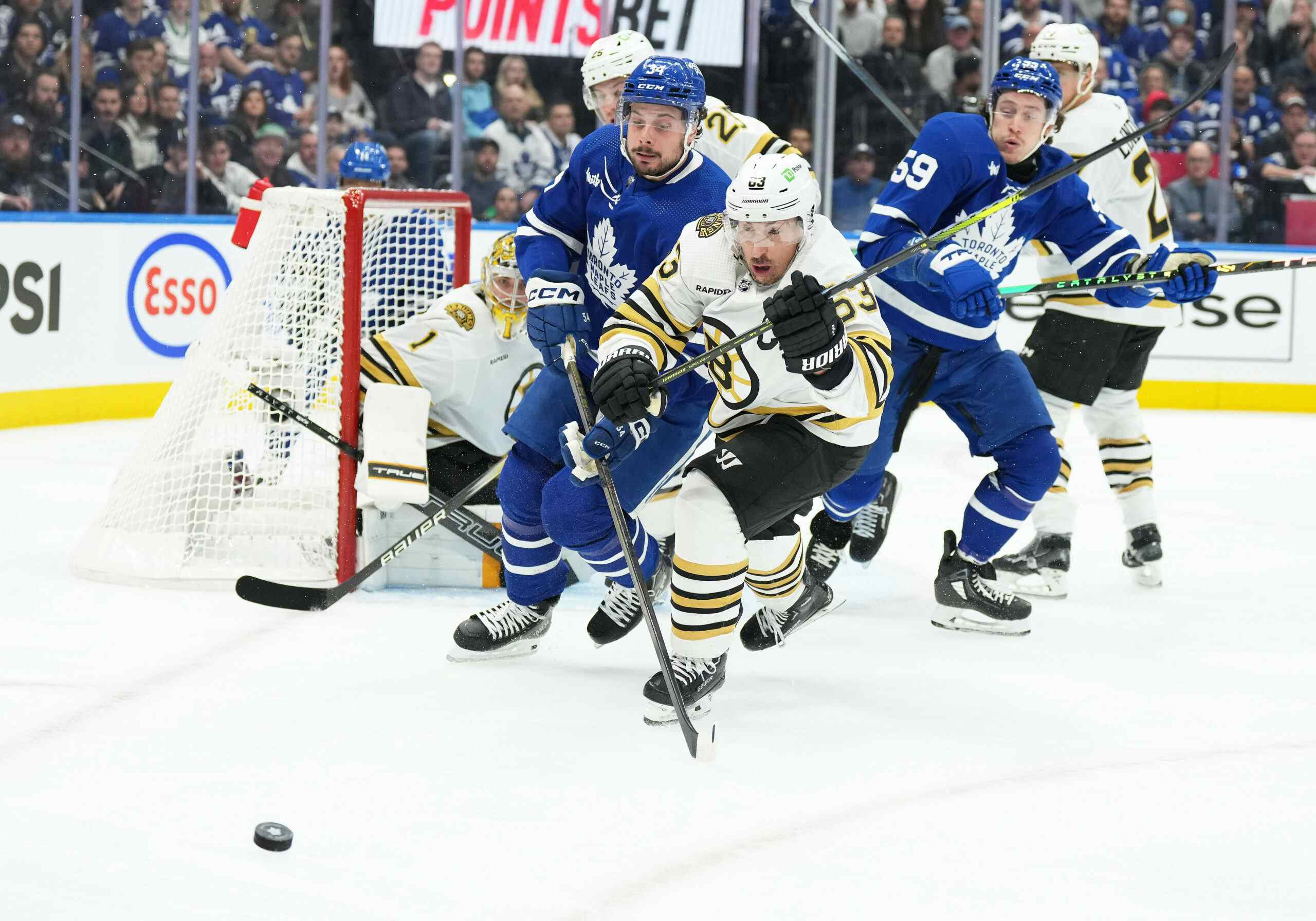5 key takeaways from Lou Lamoriello’s TSN interview

Last night, TSN released Pierre Lebrun’s interview with Toronto Maple Leafs general manager Lou Lamoriello in its entirety. You can find the interview here if you’re the type who wants to sit down for 11 minutes, but here are the five points I thought were most interesting.
The transcriptions of the questions and answers that I used below are from our friends at Maple Leafs Hot Stove, who have also transcribed the interview in its entirety.
Best Player Available
You have the 17th overall pick. Of course, the age-old debate at the draft is taking the best player available or picking by positional need. It’s well-documented that you are a team that hopes to get better on the backend as time goes on here, but how do you think things will fall as you get to that 17th pick in terms of that debate?Lamoriello: I’ve always felt, without question, that you always take the best player available because you can never have enough quality players. Now, if it was a call between two equal players, then you would look at a position and have a choice. When it’s the best player by some sense, I don’t think you should have a choice.
Hopefully, this take throws some cold water on people asserting that Toronto have to draft for a certain position. Here’s the thing about that train of thought: once you’re in the middle of the first round, it’s doubtful that the player you would draft will be able to help you at all in that area of weakness for 2-3 years, and it’ll be another 2 or 3 more until he hits athletic prime age. By that point, any areas of strength you had on draft day will likely be depleted due to natural churn.
If your do go for position, the question shouldn’t be “what do we need now”, it’s “what will we need eventually”, and the answer to that is almost always “everything”. Especially if Toronto goes the Chicago/Pittsburgh model of establishing a core and rotating through support players as they get expensive; it’s always good to have re-enforcement prospects staggered across the development curve.
I suppose what matters next is the definition of best; Toronto’s last two back-half first rounders weren’t exactly home runs (Tyler Biggs and Frederik Gauthier), but they were selections of a prior regime. Toronto’s second round picks over the past two years (Travis Dermott, Jeremy Bracco, Yegor Korshkov, Carl Grundstrom), appear to give reason to believe that some element of upside will be at play.
Defence
How difficult is it, though, to go out and upgrade your blue line in an offseason in which it is clear there is a long list of teams that have identified wanting to upgrade their blue line as a top priority, and yet there are not that many teams actually selling defencemen? There is a market imbalance. How do you navigate through that?Lamoriello: That’s a great question. If I had an answer, then we’d have a solution. Like the old proverb, there is supply and there is demand. For certain positions right now, there is more demand than there is supply so we’ll just have to do the best we can. We’re very comfortable with our defence, with our young players we’ve got coming, and also the addition of a couple of Swedish defencemen. We’ll just have to wait and see. I don’t feel you’re ever good enough in any position, provided you can get better without subtracting to make another hole. You never fill something by making another hole. So we’ll just have to wait and see.
Waiting out the seller’s market might not necessarily be a bad thing. I’m not convinced that things are as desperate on either side as people make the market out to be; even teams with surpluses like to stack up, and very few teams are completely barren. The Leafs certainly aren’t that; they’d surely like to improve an area that isn’t quite as stacked as other positions, but they have at least four, arguably five capable defencemen heading into next year without even dipping into contract extensions.
Getting to more than capable is the goal, but not if you damage yourself in another area in a way that makes it unjustifiable.
Backup Goaltending
Curtis McElhinney ended the season as your backup goalie. He is a UFA on July 1st. What is your sense of the backup goalie position, whether it’s Curtis or someone else?Lamoriello: First of all, I think it’s a very important position. I thought he did an outstanding job for us. No decision has been made at that position at this point. Certainly, not much can and will be done, I don’t think, until July 1. We are going to certainly fill that position, whether it’s with Curtis or whoever we feel is the right person that is available.
From the sounds of it, the Leafs aren’t committing to anything here. Which is probably for the best; McElhinney looked good in stretches, but doesn’t have a great track record in the big picture. The key in bringing him in is widely speculated to be Babcock’s preference for raw size in his goaltenders, and there are quite a few netminders that project to be available come July that have some height to them (at least, more so than Jhonas Enroth did). Whether or not Vegas pulls a changeup and grabs one of the Marlies goaltenders might play a factor into the decision-making process as well.
Expansion
What do you make of the Vegas factor, though? Certainly, it seems everything seems to be gravitating around George McPhee and the decisions he’s going to make here over the next few weeks. What do you make of that?Lamoriello: Having been through some of the expansion drafts, it’s very similar. Being one team, as it is, is certainly different from that factor. But George has done an outstanding job. He’s put an outstanding staff together. They’ve been out on the field. Right now, until they get the lists from each and every team — like all of us, I’m sure they’ve put potential lists together on what people can and can’t do, knowing what the criteria is — I don’t think anything can and will happen. That window — the number of days that he has — is going to be very interesting between not only the expansion team but the [other] teams themselves.
This is something I’ve been thinking about a little bit as back-door deal conspiracy theories get thrown into the wilderness. I don’t think there are any foregone conclusion transactions out there because, frankly, why would George McPhee limit himself to that? Unless a team is going to knock his socks off with a sweetener, why agree in advance to something until you know what all 30 teams are leaving you?
There may be some roots planted, but that 72-hour window (read more about the process here), is where the shoes will truly drop. At this stage, we’re just talking guesswork; it could be either boring or a madhouse. Not to mention, so many teams have sizable lists of players they’d want to manage
The Future
Final question, Lou, is about yourself. When you came on as Leafs GM, it sounded like maybe a short-term proposition, but you’ve obviously enjoyed it. You like working with Brendan Shanahan and Mike Babcock. How long do you think you’ll be Leafs GM?Lamoriello: First of all, the relationship with Brendan and Mike has been exceptional, but not only [with them]. There’s Mark Hunter, Kyle Dubas, Brandon Pridham. The whole staff, in and out… I think Toronto is very fortunate to have the group of people they have with the players on the ice and the people off [the ice]. As far as what the future brings, I’m leaving here and we’re going into a meeting for another interview.
Personally, I think the fact that Mark Hunter was mentioned first is a clear sign that Kyle Dubas has been locked in a room indefini…. no, but actually, it’s interesting that Lamoriello is being coy with the answer here. His contract is up at the end of next year, and gossip as to what the next step is at a fever pitch right now. It’s probably best to not close any doors, though; this market would lose its mind if he Leno’d it in 13 months.
As a reminder, the full video can be watched on TSN.ca and the full transcript can be read on MLHS.
Recent articles from Jeff Veillette





